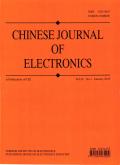IPFA-Net: Important Points Feature Aggregating Net for Point Cloud Classification and Segmentation
IF 3
4区 计算机科学
Q3 ENGINEERING, ELECTRICAL & ELECTRONIC
引用次数: 0
Abstract
This paper focuses on the problems of point cloud deep neural networks in classification and segmentation tasks, including losing important information during down-sampling, ignoring relationships among points when extracting features, and network performance being susceptible to the sparsity of point cloud. To begin with, this paper proposes a farthest point sampling-important points sampling method for down-sampling, which can preserve important information of point clouds and maintain the geometry of input data. Then, the local feature relation aggregating method is proposed for feature extraction, improving the network's ability to learn contextual information and extract rich local region features. Based on these methods, the important points feature aggregating net (IPFA-Net) is designed for point cloud classification and segmentation tasks. Furthermore, this paper proposes the multi-scale multi-density feature connecting method to reduce the negative impact of point cloud data sparsity on network performance. Finally, the effectiveness of IPFA-Net is demonstrated through experiments on ModelNet40, ShapeNet part, and ScanNet v2 datasets. IPFA-Net is robust to reducing the number of point clouds, with only a 3.3% decrease in accuracy under a 16-fold reduction of point number. In the part segmentation experiments, our method achieves the best segmentation performance for five objects.IPFA-Net:用于点云分类和分割的重要点特征聚合网络
重点研究了点云深度神经网络在分类和分割任务中的问题,包括下采样时丢失重要信息、提取特征时忽略点之间的关系、网络性能容易受到点云稀疏性的影响等。首先,本文提出了一种下采样的最远点采样-重要点采样方法,既能保留点云的重要信息,又能保持输入数据的几何形状。然后,提出了局部特征关系聚合方法进行特征提取,提高了网络学习上下文信息和提取丰富局部区域特征的能力。在此基础上,设计了用于点云分类和分割的重要点特征聚合网(IPFA-Net)。此外,本文提出了多尺度多密度特征连接方法,以减少点云数据稀疏性对网络性能的负面影响。最后,通过在ModelNet40、ShapeNet部分和ScanNet v2数据集上的实验验证了IPFA-Net的有效性。IPFA-Net在减少点云数量方面具有鲁棒性,在点云数量减少16倍的情况下,精度仅下降3.3%。在零件分割实验中,我们的方法对5个物体的分割效果最好。
本文章由计算机程序翻译,如有差异,请以英文原文为准。
求助全文
约1分钟内获得全文
求助全文
来源期刊

Chinese Journal of Electronics
工程技术-工程:电子与电气
CiteScore
3.70
自引率
16.70%
发文量
342
审稿时长
12.0 months
期刊介绍:
CJE focuses on the emerging fields of electronics, publishing innovative and transformative research papers. Most of the papers published in CJE are from universities and research institutes, presenting their innovative research results. Both theoretical and practical contributions are encouraged, and original research papers reporting novel solutions to the hot topics in electronics are strongly recommended.
 求助内容:
求助内容: 应助结果提醒方式:
应助结果提醒方式:


